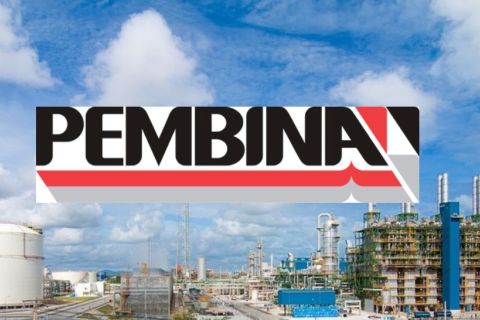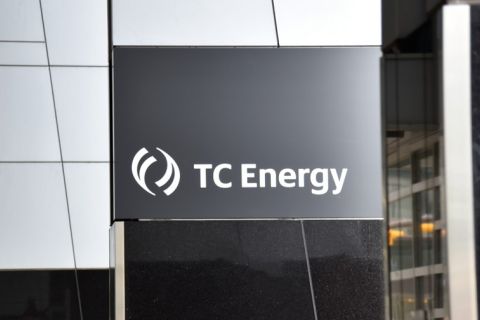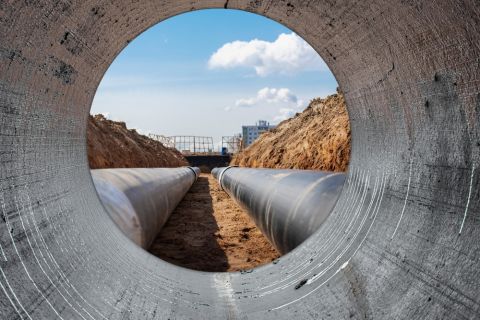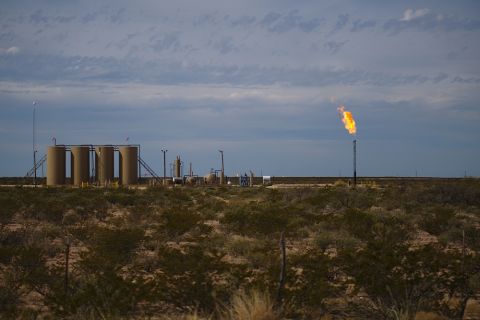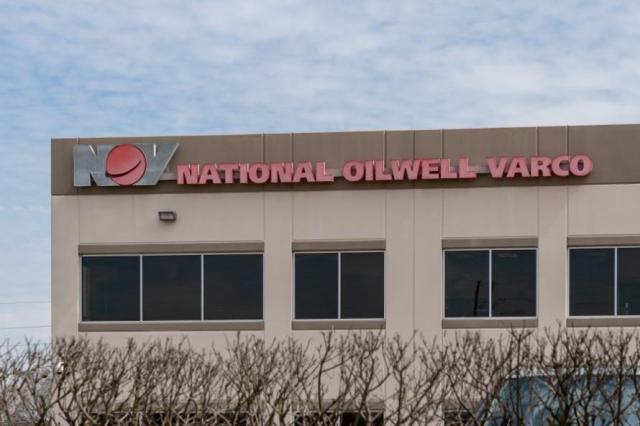
NOV headquarters in Houston. (Source: Shutterstock)
A decade of underinvestment in the oil patch hit service companies such as NOV hard, but what appears to be the beginnings of an upcycle are lifting the company’s fortunes.
“For the U.S., it's been an interesting time. We've navigated a decade of significant global underinvestment in oil and gas everywhere except North American shale, which was responsible for 80% of global oil supply growth over the past 10 years, and during the last few years of this journey, we've been pommeled by inflationary gales and a supply chain tsunami,” NOV Chairman, President and CEO Clay Williams said during an Oct. 27 conference call discussing third-quarter 2023 earnings results.
In response to the downcycle, NOV cut costs everywhere, except for new technology development, he said.
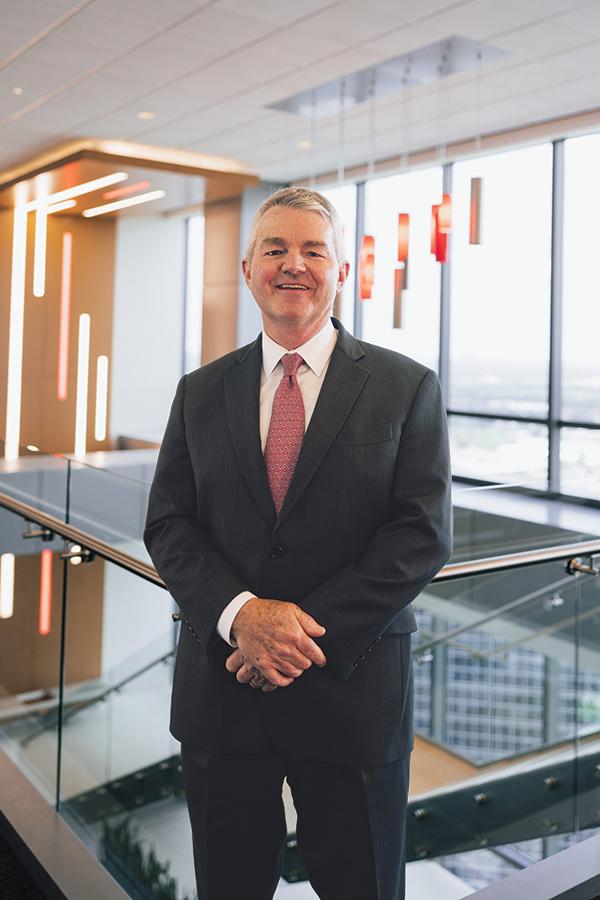
History, and upcycles
“Oilfield downcycles all end in, well, upcycles, and the end of every downcycle in the beginning of the next upcycle,” with those who weather them scarred by their “near death experiences,” he said.
“Oilfield service survivors generally suffer from chronic PTSD [post-traumatic stress disorder]. They all swear never to spend a dollar of capital they don't have to, ever again.”
He cited 1992, 1999 and the current market as examples of that trend. “In a lot of ways, following periods of underinvestment, solemn pledges of capital discipline kind of mark the opening ceremony for an upcycle.”
Williams added that as activity rises and an upcycle gains momentum, the challenge oilfield service companies face is less about financial fidelity and more about the laws of physics.
“The oil and gas industry consumes highly-specialized, fit-for-purpose equipment voraciously. Putting a bit five miles into the earth to hit a precise target devours expensive pipe and rigs,” William said.
Demand leads to “outsized margins” and returns for oilfield service companies that own scarce equipment, he said.
“When E&P companies face these equipment shortages, they actively sponsor additions to fleets through profitable longer-term contracts to both incumbents and startups, and as the upcycle progresses, well you know the rest of the story,” he said.
Offshore, international
Offshore, operators are starting to sign longer-term contracts for rigs because fewer rigs are available for reactivation, Williams said.
“We're kind of getting to the bottom of the barrel, frankly, on rig reactivations” and resumption of new construction projects suspended during the past decade, he said. “Those opportunities are becoming less and less and … [and] it's taking a lot more money and capital to get those rigs back into the fleet and serviceable because they've been stacked longer.”
That has generated increasing per-rig revenue opportunities for NOV, he said.
NOV also sees growing momentum in several offshore basins around the world and expects global offshore final investment decisions to be about $140 billion this year, up 60% from the average of the preceding eight years, Clay said, with 2024 looking even stronger.
New technology
NOV has remained busy with technology development, including bits, drilling motors, composite pipe designs and digital products, including NOV’s new wired drill pipe, high-speed connections, edge computing products, control systems and new automation tools.
NOV’s rig automation and robotic products gained market traction during the quarter, he said. The company installed and commissioned the ATOM RTX Robotic System on a drillship contracted with a European operator to work offshore Brazil.
It’s the first offshore deployment of this system, and the first land version will be in operation soon, he said.
Jose Bayardo, senior vice president and CFO, said the company’s downhole broadband technology saved 31 days and over $15 million on the most recent well for an operator on the Norwegian Continental Shelf. The package included optimization services, visualization tools, wired drill pipe, downhole drilling equipment and real-time sensors. The tools combined to enable real-time and high-quality image logs to monitor formation breakouts and drill more confidently and rapidly.
“We're seeing really good traction and specific application of those digital products with our wired drill pipe hardware coupled with managed pressure drilling,” Williams said. “I really think we're pioneering a whole new way of drilling that 10 years from now, 20 years from now … you're going to see on most rigs.”
Revenues rise
NOV posted their third-quarter net income of $114 million on revenues of $2.19 billion. Compared to second-quarter 2023, that was down by $41 million — but up $82 million year-over-year.
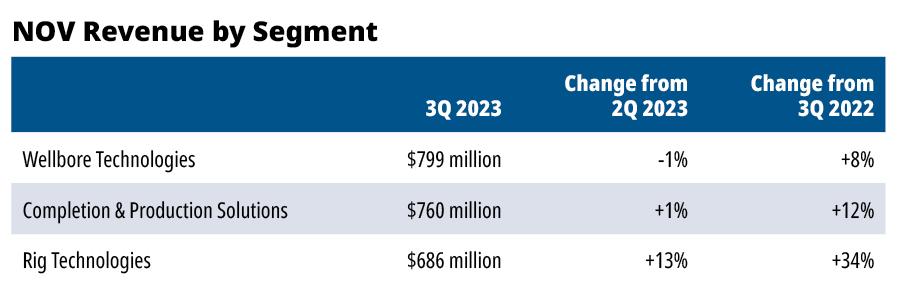
NOV attributed the wellbore technologies revenue drop to lower North American drilling activity and lower drill pipe shipments during the quarter, which were mostly offset by improvements in the international and offshore markets. The company said offshore projects were responsible for increased revenue in the completion and production solutions segment. Improved execution and spare part shipments from the company’s aftermarket operations were the primary drivers for rig technology revenues, according to NOV.
Recommended Reading
Imperial Oil Shuts Down Fuel Pipeline in Central Canada
2024-03-18 - Supplies on the Winnipeg regional line will be rerouted for three months.
Pembina Pipeline Enters Ethane-Supply Agreement, Slow Walks LNG Project
2024-02-26 - Canadian midstream company Pembina Pipeline also said it would hold off on new LNG terminal decision in a fourth quarter earnings call.
TC Energy’s Keystone Back Online After Temporary Service Halt
2024-03-10 - As Canada’s pipeline network runs full, producers are anxious for the Trans Mountain Expansion to come online.
Targa Resources Forecasts Rising Profits on 2024 Exports
2024-02-20 - Midstream company Targa Resources reports a record fourth quarter in volumes and NGL fractionation.
Waha NatGas Prices Go Negative
2024-03-14 - An Enterprise Partners executive said conditions make for a strong LNG export market at an industry lunch on March 14.



